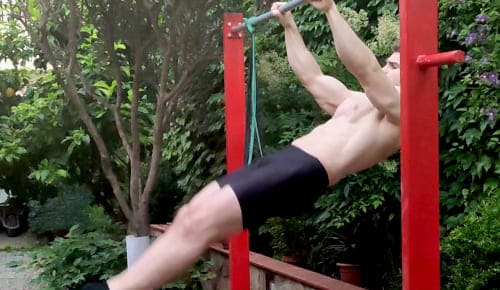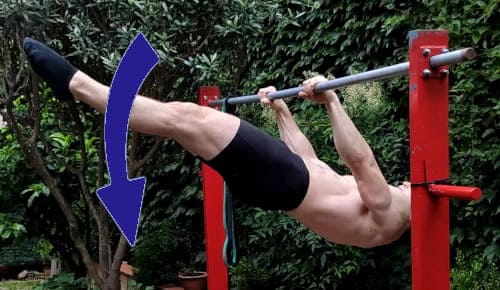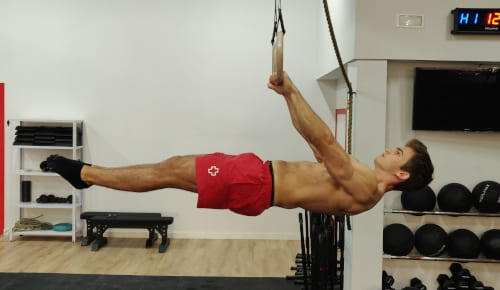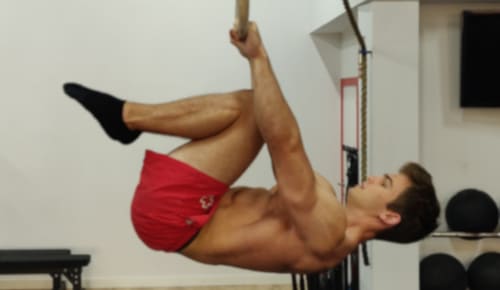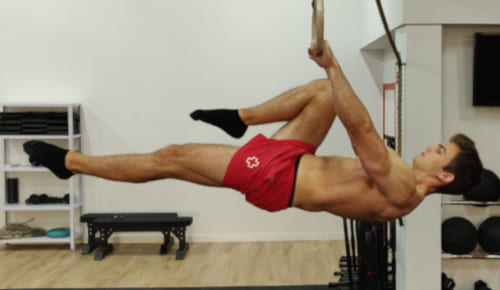Exercise Description
What is the Dragon Flag?
The Dragon Flag in an Intermediate Calisthenics bodyweight exercise that is key for working your core stability and pulling strength. The main objective of the Dragon Flag exercise it to lift the body from the ground, using as a points of support the upper back area or trapeze (depending on the variation) and the hands holding to a bar.
The dragon flag can be performed in many ways, but the most common variations are the dragon flag in the floor and the dragon flag in the bar. The variation shown in the first video is the second version (the most difficult one, as the contact area is only the trapeze), but the exercise can also be done laying on the ground and only lifting the lower back and legs from the floor.
The most important factor to keep in mind when doing a dragon flag in a bar is the enormous pressure that the trapeze needs to sustain, as all the body weight will create leverage and the tension will be held in the trapeze (only one side). Therefore, it is recommended to perform the exercise on the ground in order to hold the tension with your upper back.
Also, when doing the Dragon Flag in a straight bar, you will be laying completely parallel to the ground (which is harder, as the strength you need to do with your arms is higher because of the leverage). When doing the Dragon Flag in the floor, you will never be completely parallel to the ground, so the leverage will be smaller the less parallel you are to the floor.
See below, an example of the dragon flag on the floor:
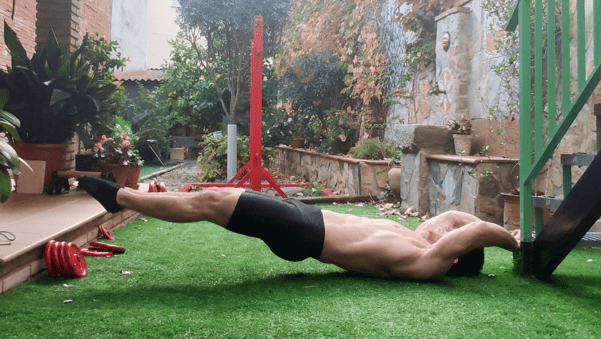
How to do the Dragon Flag
The execution of the dragon flag is simple, once the needed strength levels are met:
– Lay on the ground right in front of a lower bar (bar next to the back of your head).
– Grab the bar with both hands and with the help of your legs and core lift of your body form the ground into an inverse pike position. Both arms can be bent (easier) or straight (harder).
– Lower the body angle with respect to the ground slowly, until you reach as parallel as possible to the ground with your body (without losing the proper form). As we mentioned before, the closer to a perfect parallel with respect to the ground, the harder the element.
– You will be now in a dragon flag position. From here you can pull and go back up, or help with your feet to raise back up and perform the eccentric part of the movement again.
It’s important to keep in mind that you need to maintain a Posterior Pelvic Tilt (or PPT) along the whole movement with straight legs and pointing feet.
Main Muscles Involved in the Dragon Flag
The main muscle groups involved in the Dragon Flag are:

– Rectus Abdominis
– Lower Back
– Obliques
– Glutes
– Pulling Muscle groups such as serratus, biceps and lats.
